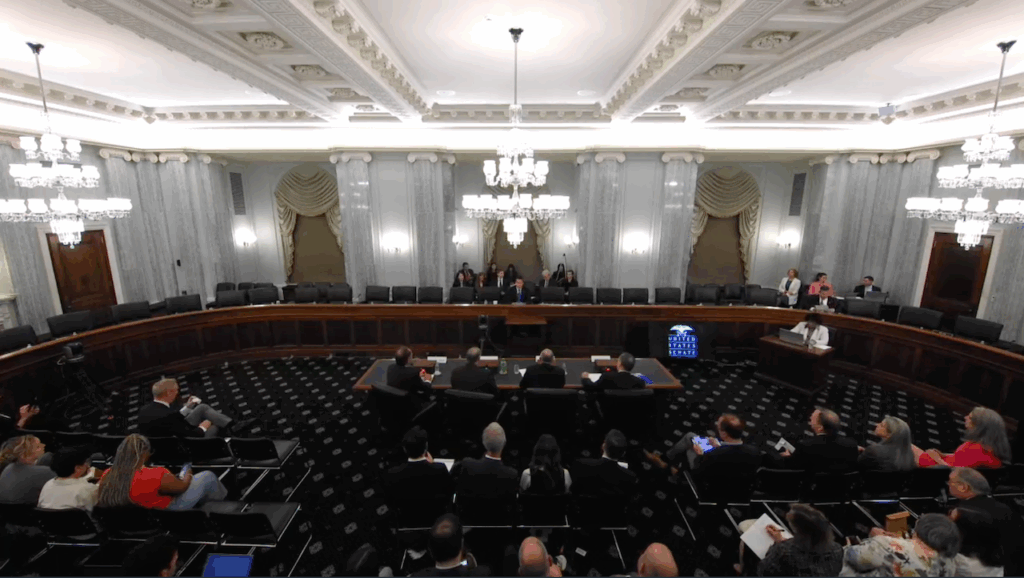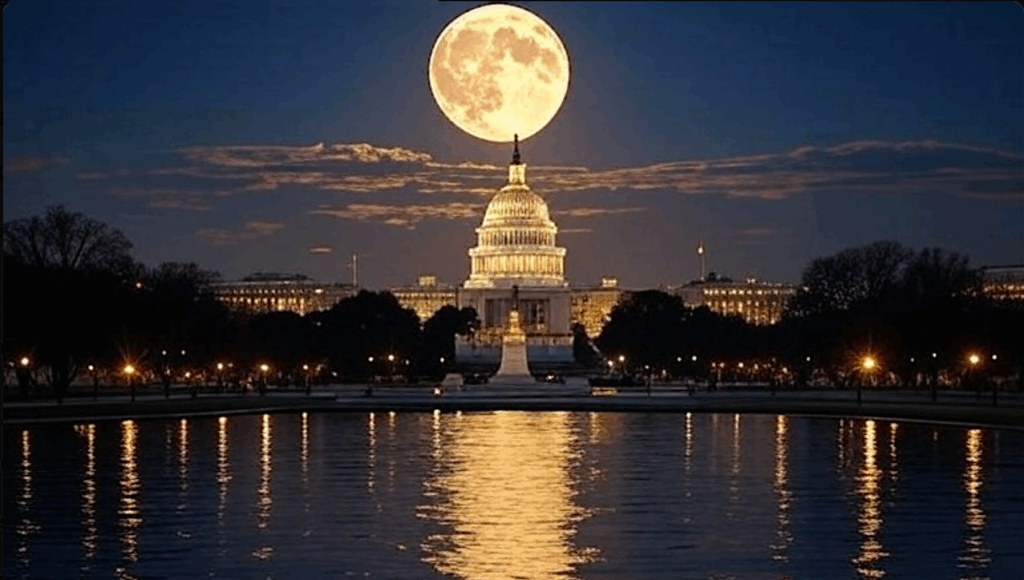GAO: NASA Will Have Problems Explaining Its Moon Plans

GAO: NASA Lunar Programs: Opportunities Exist to Strengthen Analyses and Plans for Moon Landing
“NASA conducted studies to inform its lunar plans, but did not fully assess a range of alternatives to these plans. GAO best practices state that analyzing alternatives provides a framework to help ensure that entities consistently and reliably select the alternative that best meets the mission need and justify agency decisions. Given NASA’s schedule, conducting this analysis is no longer viable. Instead, NASA intends to create a summary of the studies that informed its lunar plans. However, it has not committed to a completion date. Without a documented rationale, NASA is ill-positioned to effectively communicate its decisions to stakeholders and facilitate a better understanding of its plans.”
– NASA Really Really Needs An Artemis Plan – Soon, earlier post
– Artemis Update From Bridenstine and Loverro, earlier post
– Where Is NASA’s Plan For Sustainable Moon/Mars Exploration? (Update), earlier post
 Keith’s note: If you read the management response at the end of this report you will see that NASA will “provide a preliminary cost estimate fo the Artemis III mission by the end of calendar year 2020, once the agency makes baseline cost and schedule committments for the Human Landing System currently planned for September 2020)” … ” NASA is developing a document that will summarize the trades and architectural studies which constituted an analysis of architectural alternatives and resulted in the agency’s decision to baseline the current lunar architecture and associated programs … NASA currently pans to complete this document by July 2020″. NASA also says that it will develop a “Moon to Mars campaign strategy”.
Keith’s note: If you read the management response at the end of this report you will see that NASA will “provide a preliminary cost estimate fo the Artemis III mission by the end of calendar year 2020, once the agency makes baseline cost and schedule committments for the Human Landing System currently planned for September 2020)” … ” NASA is developing a document that will summarize the trades and architectural studies which constituted an analysis of architectural alternatives and resulted in the agency’s decision to baseline the current lunar architecture and associated programs … NASA currently pans to complete this document by July 2020″. NASA also says that it will develop a “Moon to Mars campaign strategy”.
In other words NASA is not going to be in a position to provide much detail in the National Space Council’s requested report report (already 60 days overdue) until next summer – a year after it was requested. Nor are they apparently going to be able to tell Congress what it needs to tell them in order to get all of their funds released. Moreover NASA will not have its Artemis cost estimates figured out until late next year – barely three calendar years before they expect to put humans back on the Moon. And NASA still does not have a plan for the whole Mars thing – and can’t say when they will.
Exactly two years ago the White House stated “Beginning with missions beyond low-Earth orbit, the United States will lead the return of humans to the Moon for long-term exploration and utilization, followed by human missions to Mars and other destinations”. In March 2019 a frustrated Vice President Pence said “In Space Policy Directive-1, the President directed NASA to create a lunar exploration plan. But as of today, more than 15 months later, we still don’t have a plan in place. But Administrator Bridenstine told me, five minutes ago, we now have a plan to return to the moon.” Moments later he said “it is the stated policy of this administration and the United States of America to return American astronauts to the Moon within the next five years.”
In their response to this GAO report NASA says that they won’t even have a plan until late next summer – a year after Pence expressed his frustration about the lack of a plan. in March 2019 Pence gave NASA 5 years to put footprints on the Moon which is now seen as being no later than 31 December 2024. The agency is now telling us (and Pence) that it will have taken them yet another year to come up with a plan. And if the agency stays true to its bad habits the plan will still have major holes in it and no one will be able to stand there with a straight face and say how much it will cost. And then, just as they deliver this plan the election happens and …









yeah, but it’ll be a really good plan, with lots of colours and flashy slide transitions … should be Oscar material !?
So what is the solution here? Tell NASA to move out of the way and let private companies handle it all?
It should be re-phased as telling the senior senator from Alabama to let NASA do a real study without the SLS millstone.
As long as NASA HEOMD is stuck with a launcher that have a margin cost of about a Billion dollars per flight that needs another Billion dollars or so in overhead and another Billion dollars or so in the crew vehicle stack. Never mind the development cost. NASA will only be capable of a flags & footprint Moon sortie mission.
There are many cheaper commercial options to get to the Moon.
However the folks from Hawthorne will likely field a shiny vehicle capable of landing about 50 tonnes on the Moon by 2024 without funding from NASA, IMO.
Who would you bet on. The Boeing folks that is over budget and behind schedule with the SLS or the folks who routinely recovers rocket cores in the Atlantic for re-flight?
I hope not, as I see NASA has a role in defining missions, conducting science, trail-blazing … possibly not in building rocket ships and other “well understood” hardware. Ultimately NASA may become something like the FAA (which outgrew it’s predecessor, NACA) … researching some interesting bits, but mostly keeping travellers safe and reigning in some of the more cowboy elements.
Ultimately, doing exactly what Congress is about to do. The budget says NASA can’t spend more than 40% of their FY20 budget until they’ve delivered a plan, and a plan with things like milestones, launch dates and estimated costs. There’s a reason Congress has control of the budget, even if it also has some drawbacks.
How is NASA standing in the way of what a private company might want to do? While you might prefer to see more funding go directly to commercial companies, how might that occur? Who would coordinate the range of opportunities?
That’s what I recall, the Space Council first asked for a plan over a year ago (almost two years ago now).
Gerst developed the notional “plan” for a 2028 return. Bridenstine’s inability to get this moving is hard to understand.
Yes, they seem to be playing out the clock until the next Administration hits the reset button and it’s onward to Mars again, in the distant future, or onward to nowhere as NASA gets turned into the lead climate change agency. Such is the way of bureaucracies.
Hopefully Starship will be flying by then to upset the Apple cart in their strategy
That’s what happens when there is no true, long-term, sustainable plan or vision that can be supported across all levels. This is why we have been flying circles for 50 years.
A part of the problem could be that a landing in the year that they were directed to plan towards (2024) will require that we accept enormous risk. A comparison of Artemis to Apollo shows that Artemis will have little time to test and fix things – with the third mission planning to land on the Moon there will be no equivalent of Apollo 10 for instance. We will repeat Apollo 8 with very very little confidence in the vehicle – nothing like Apollo had.
If we just hand the mission over to SpaceX or others – will they find people willing to take these risks? Will they just pay them far more than the government?
I will be most interested to see if NASA considered a plan combining FH launch of a XEUS-type lander to LEO with a large external drop tank for one-way cargo missions and the same plus an F9-Dragon for crewed missions. Far more cost-effective (i.e. sustainable) and using near/existing-term tech.